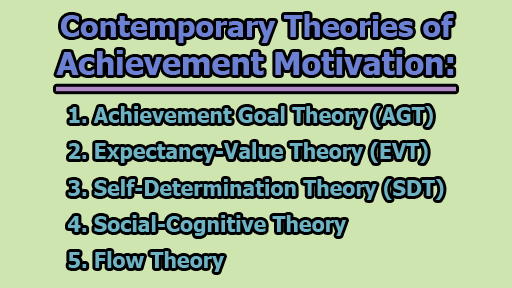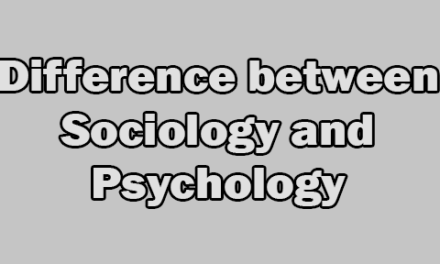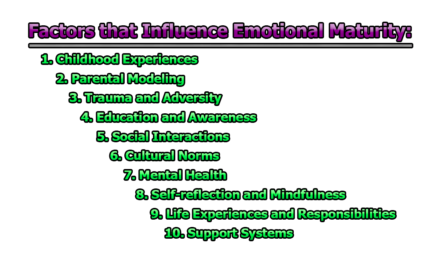Contemporary Theories of Achievement Motivation:
Achievement motivation is a complex psychological construct that involves the drive to excel, accomplish goals, and succeed in one’s endeavors. Several contemporary theories attempt to explain and understand achievement motivation, each offering unique perspectives and insights. In this discussion, we will explore the contemporary theories of achievement motivation.
1. Achievement Goal Theory (AGT):
Achievement Goal Theory (AGT), developed by Carol S. Dweck and Elliot Leggett in 1988, provides a framework for understanding how individuals’ goals influence their motivation and behavior in achievement settings. AGT distinguishes between two fundamental types of goals—mastery goals and performance goals—each shaping the individual’s approach to tasks and their interpretation of success.
1.1 Mastery Goals: Mastery goals, according to AGT, are centered around the intrinsic desire to acquire new skills, improve understanding, and master a particular task. Individuals pursuing mastery goals are motivated by personal progress and the development of competence. Success is defined internally, and the focus is on the process of learning rather than the outcome. Mastery-oriented individuals are more likely to embrace challenges, persist in the face of setbacks, and adopt strategies that enhance their understanding of the subject matter.
1.2 Performance Goals: In contrast, performance goals are driven by the desire to demonstrate competence relative to others. Individuals with performance goals seek to outperform their peers, and success is often measured in comparison to external standards or the achievements of others. This goal orientation may lead individuals to adopt strategies aimed at showcasing their abilities, sometimes at the expense of deep learning or understanding. The fear of failure can be more pronounced in individuals with performance goals, as setbacks may be perceived as a threat to their competence (Dweck & Leggett, 1988).
1.3 Critique and Application: AGT has received widespread recognition for its practical applications in educational and organizational settings. Educators often use the framework to tailor instructional strategies based on students’ goal orientations. For instance, fostering a mastery-oriented environment involves encouraging a focus on personal improvement, providing constructive feedback, and promoting a growth mindset. In contrast, performance-oriented situations might involve creating healthy competition and recognizing individual achievements in comparison to peers.
One critique of AGT lies in its dichotomous classification of goals, as some individuals may simultaneously hold mastery and performance goals in different contexts. However, the theory remains valuable in highlighting the diverse motivations that individuals bring to achievement settings and offering insights into how these motivations impact learning and performance outcomes.
Thus, AGT provides a valuable lens through which to understand how individuals’ goals influence their motivation, behavior, and ultimately, their success in various domains. Its practical applications in educational and organizational contexts make it a foundational theory in the study of achievement motivation.
2. Expectancy-Value Theory (EVT):
Expectancy-Value Theory (EVT), developed by Jacquelynne Eccles and Allan Wigfield, is a comprehensive approach that examines the cognitive processes and beliefs influencing individuals’ motivation. This theory posits that achievement motivation is driven by two main components: expectations of success and the perceived value of the goal.
2.1 Expectancy Component: The expectancy component of EVT focuses on individuals’ beliefs about the likelihood of success based on their efforts. It suggests that individuals are more motivated when they expect that their efforts will lead to successful outcomes. These expectations are influenced by factors such as past experiences, feedback received, and the perceived difficulty of the task. Higher expectations of success often lead to increased motivation and effort, while lower expectations may result in decreased motivation.
2.2 Value Component: The value component of EVT emphasizes the subjective importance individuals attach to a specific task or goal. According to this component, individuals are more motivated to engage in activities they perceive as personally meaningful or valuable. The perceived value can be intrinsic (related to personal interest or enjoyment) or extrinsic (related to external rewards or recognition). EVT suggests that the more valuable individuals perceive a task, the more motivated they will be to invest effort in pursuing it (Eccles & Wigfield, 2002).
2.3 Critique and Application: EVT has been widely applied in educational contexts to understand students’ motivation and guide instructional practices. By assessing and addressing students’ expectations and perceptions of value, educators can create learning environments that promote positive motivation. However, a potential critique of EVT lies in its emphasis on individual beliefs, as social and cultural factors may also play a significant role in shaping motivation.
In practical terms, EVT suggests that educators and policymakers should consider not only the difficulty and relevance of tasks but also the perceived value and the expectations of success when designing educational interventions. Additionally, recognizing the dynamic nature of these beliefs and values over time is crucial for maintaining and enhancing motivation.
Consequently, Expectancy-Value Theory provides a comprehensive framework for understanding the cognitive processes underlying achievement motivation. Its dual focus on expectations and values offers valuable insights for educators, psychologists, and researchers seeking to enhance individuals’ motivation in various domains.
3. Self-Determination Theory (SDT):
Self-Determination Theory (SDT), developed by Edward L. Deci and Richard M. Ryan, is a macro-theory of human motivation that emphasizes the role of three innate psychological needs: autonomy, competence, and relatedness. SDT posits that the fulfillment of these needs is crucial for fostering intrinsic motivation and optimal development.
3.1 Autonomy: Autonomy, as one of the central tenets of SDT, refers to the fundamental human need to feel in control and volitionally engaged in one’s actions. Individuals are motivated when they perceive that their actions are self-determined rather than externally controlled. In educational settings, providing choices, acknowledging personal perspectives, and encouraging self-directed learning activities support the satisfaction of autonomy needs.
3.2 Competence: The need for competence involves the desire to feel effective and capable in one’s interactions with the environment. When individuals perceive that they are competent and able to master challenges, their motivation is enhanced. Educational environments that offer appropriate challenges, constructive feedback, and opportunities for skill development contribute to the fulfillment of competence needs.
3.3 Relatedness: Relatedness encompasses the need for social connection, belongingness, and interpersonal relationships. Individuals are motivated when they experience positive connections with others and a sense of community. In educational settings, fostering collaborative learning, encouraging positive teacher-student relationships, and creating a supportive peer environment contribute to the fulfillment of relatedness needs (Deci & Ryan, 2000).
3.4 Critique and Application: SDT has gained widespread acceptance due to its application across various domains, including education, workplace motivation, and sports. However, some critics argue that the theory may oversimplify the complexity of motivation by focusing primarily on these three needs. Additionally, the cultural context may influence the prioritization of these needs differently.
In educational settings, SDT suggests that creating an environment that supports autonomy, provides opportunities for skill development, and fosters positive social interactions will lead to enhanced motivation and well-being. Teachers can play a crucial role in acknowledging students’ perspectives, offering meaningful choices, and promoting a sense of belonging to optimize motivation and engagement.
Subsequently, Self-Determination Theory provides a robust framework for understanding the fundamental psychological needs that drive human motivation. Its practical implications extend to various contexts, offering insights for educators, leaders, and individuals seeking to promote intrinsic motivation and well-being.
4. Social-Cognitive Theory:
Social-Cognitive Theory, developed by Albert Bandura, extends traditional behaviorism by emphasizing the role of cognitive processes, observational learning, and self-regulation in shaping human behavior and motivation. This theory is particularly relevant in understanding how individuals learn from observing others and how their beliefs about their capabilities influence their motivation.
4.1 Observational Learning: At the core of Social-Cognitive Theory is the concept of observational learning, where individuals acquire new behaviors and attitudes by observing others. Through modeling, individuals learn from the experiences of role models, peers, or even media representations. Bandura argued that the observation of others’ successes and failures can significantly influence an individual’s motivation, shaping their beliefs about what they can achieve.
4.2 Modeling: Social-Cognitive Theory suggests that individuals are more likely to imitate behaviors they perceive as successful or rewarding. The modeling process involves paying attention to a model’s actions, retaining the observed information in memory, reproducing the behavior, and being motivated to perform the behavior based on the observed consequences. Modeling plays a crucial role in the development of various skills, attitudes, and motivational patterns.
4.3 Self-Efficacy: Central to Social-Cognitive Theory is the concept of self-efficacy, which refers to an individual’s belief in their ability to succeed in specific situations. Bandura argued that self-efficacy beliefs influence motivation, effort, and persistence. Individuals with high self-efficacy are more likely to set challenging goals, exert effort, and persevere in the face of difficulties. Conversely, low self-efficacy may lead to avoidance of challenging tasks and a decreased level of motivation (Bandura, 1986).
4.4 Critique and Application: Social-Cognitive Theory has received widespread recognition for its applicability to various domains, including education, therapy, and organizational psychology. Critics argue that the theory may oversimplify the complexity of human behavior by focusing on cognitive factors, but its practical utility has been well-documented.
In education, Social-Cognitive Theory suggests that teachers can enhance students’ motivation by providing positive models, offering opportunities for observational learning, and fostering a classroom environment that promotes self-efficacy. Additionally, interventions aimed at enhancing self-efficacy can contribute to improved academic performance and increased motivation.
Hence, Social-Cognitive Theory provides a valuable perspective on the cognitive processes involved in learning and motivation. Its emphasis on observational learning and self-efficacy has practical implications for educators and psychologists seeking to understand and enhance motivation in diverse settings.
5. Flow Theory:
Flow Theory, developed by Mihaly Csikszentmihalyi, explores the psychological state of “flow” as a central concept in understanding achievement motivation. Flow is described as an optimal experience characterized by complete absorption, deep concentration, and a sense of timelessness during an activity (Csikszentmihalyi, 1990).
5.1 Key Elements of Flow: Csikszentmihalyi identified several key elements that contribute to the experience of flow:
- Clear Goals and Feedback: Activities that provide clear goals and immediate feedback contribute to the sense of flow. Individuals are motivated when they have a clear understanding of what needs to be achieved, and they receive feedback on their progress.
- Balance Between Skill and Challenge: Flow occurs when there is a balance between an individual’s skill level and the challenge presented by the task. If the task is too easy, it may lead to boredom, while a task that is too difficult may result in anxiety. Flow is most likely to occur when there is an optimal match between skills and challenges.
- Loss of Self-Awareness: In the state of flow, individuals lose awareness of themselves and their surroundings. The focus is entirely on the task at hand, leading to a sense of immersion and deep engagement.
5.2 Application and Critique: Flow Theory has found applications in various fields, including sports, art, and education, as it provides insights into how individuals can achieve peak performance and enhance their intrinsic motivation.
In education, creating an optimal learning environment that incorporates the key elements of flow can lead to increased student engagement and motivation. Teachers can design tasks that are challenging yet achievable, provide clear goals, and offer timely feedback to facilitate the flow experience.
However, a potential critique of Flow Theory lies in its emphasis on individual experiences, potentially overlooking the impact of external factors and social context on the flow state. Additionally, the applicability of flow may vary across cultures and age groups.
Subsequently, Flow Theory offers a unique perspective on achievement motivation by focusing on the subjective experience of individuals engaged in an activity. Understanding the conditions that foster flow can guide educators, employers, and individuals in creating environments that promote optimal experiences and intrinsic motivation. As with any theory, its application should be considered in conjunction with other motivational frameworks for a more comprehensive understanding of achievement motivation.
In conclusion, the exploration of these five contemporary theories of achievement motivation provides a nuanced understanding of the diverse factors influencing human behavior and performance. From the goal-oriented perspective of Achievement Goal Theory to the cognitive processes emphasized in Social-Cognitive Theory, and from the innate psychological needs of Self-Determination Theory to the optimal state of engagement outlined in Flow Theory, each theory contributes valuable insights to the intricate tapestry of achievement motivation. Expectancy-Value Theory adds a cognitive dimension, shedding light on how individuals perceive success and value in their pursuits. As these theories intersect and complement one another, a holistic understanding emerges, offering practical implications for educators, psychologists, and individuals striving to enhance motivation in various domains. While each theory presents its strengths and potential limitations, collectively, they enrich our comprehension of the intricate interplay between cognitive, social, and emotional factors that drive human achievement. As research continues to evolve, the integration of these theories will contribute to the ongoing quest for effective strategies to foster motivation and optimize performance in diverse contexts.
References:
- Bandura, A. (1986). Social foundations of thought and action: A social cognitive theory. Prentice-Hall.
- Csikszentmihalyi, M. (1990). Flow: The psychology of optimal experience. Harper & Row.
- Deci, E. L., & Ryan, R. M. (2000). The “what” and “why” of goal pursuits: Human needs and the self-determination of behavior. Psychological Inquiry, 11(4), 227-268.
- Dweck, C. S., & Leggett, E. L. (1988). A social-cognitive approach to motivation and personality. Psychological Review, 95(2), 256-273.
- Eccles, J. S., & Wigfield, A. (2002). Motivational beliefs, values, and goals. Annual Review of Psychology, 53, 109-132.

Assistant Teacher at Zinzira Pir Mohammad Pilot School and College










